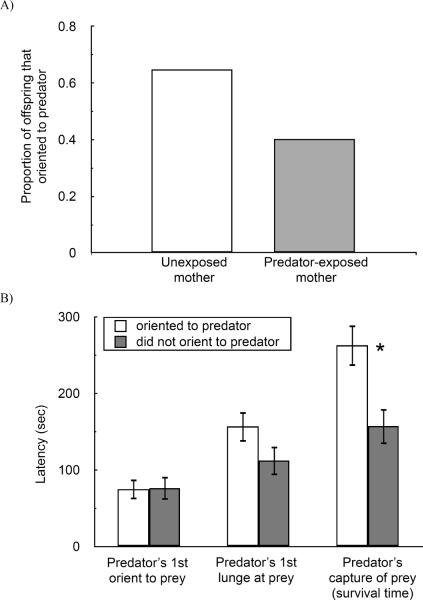Figure 3.
Orienting at the pike was an effective antipredator behaviour and differed between maternal predator-exposure treatments. (A) A greater proportion of offspring from unexposed mothers oriented to the predator than did offspring from predator-exposed mothers. (B) Stickleback that oriented to the predator survived for longer than those that did not orient to the predator. Shown are means ± SE. * indicates P = 0.016.

